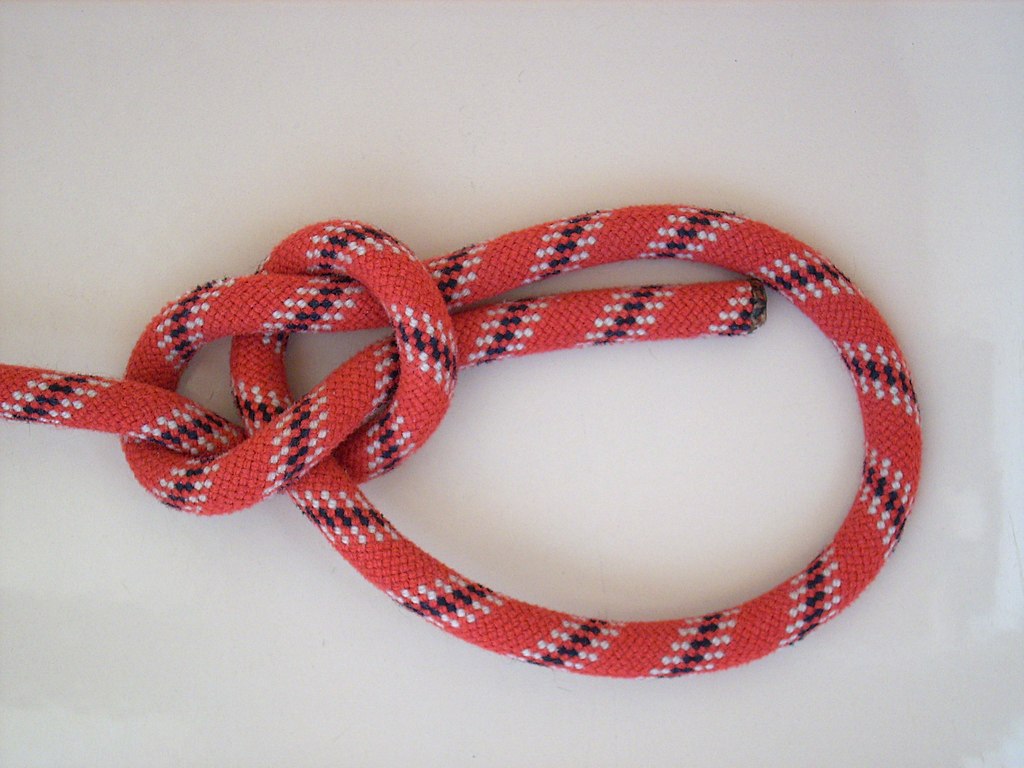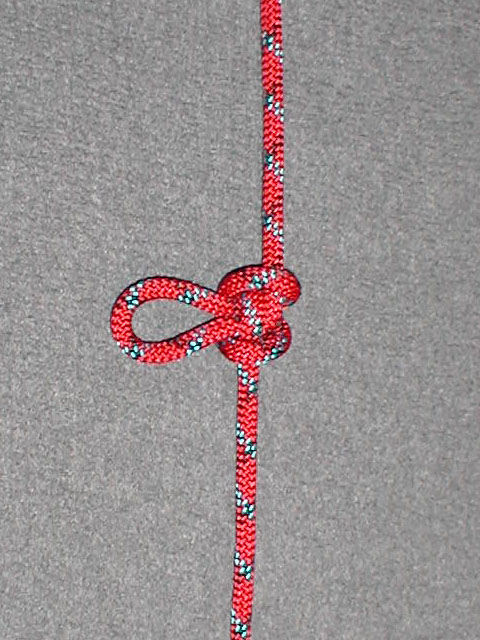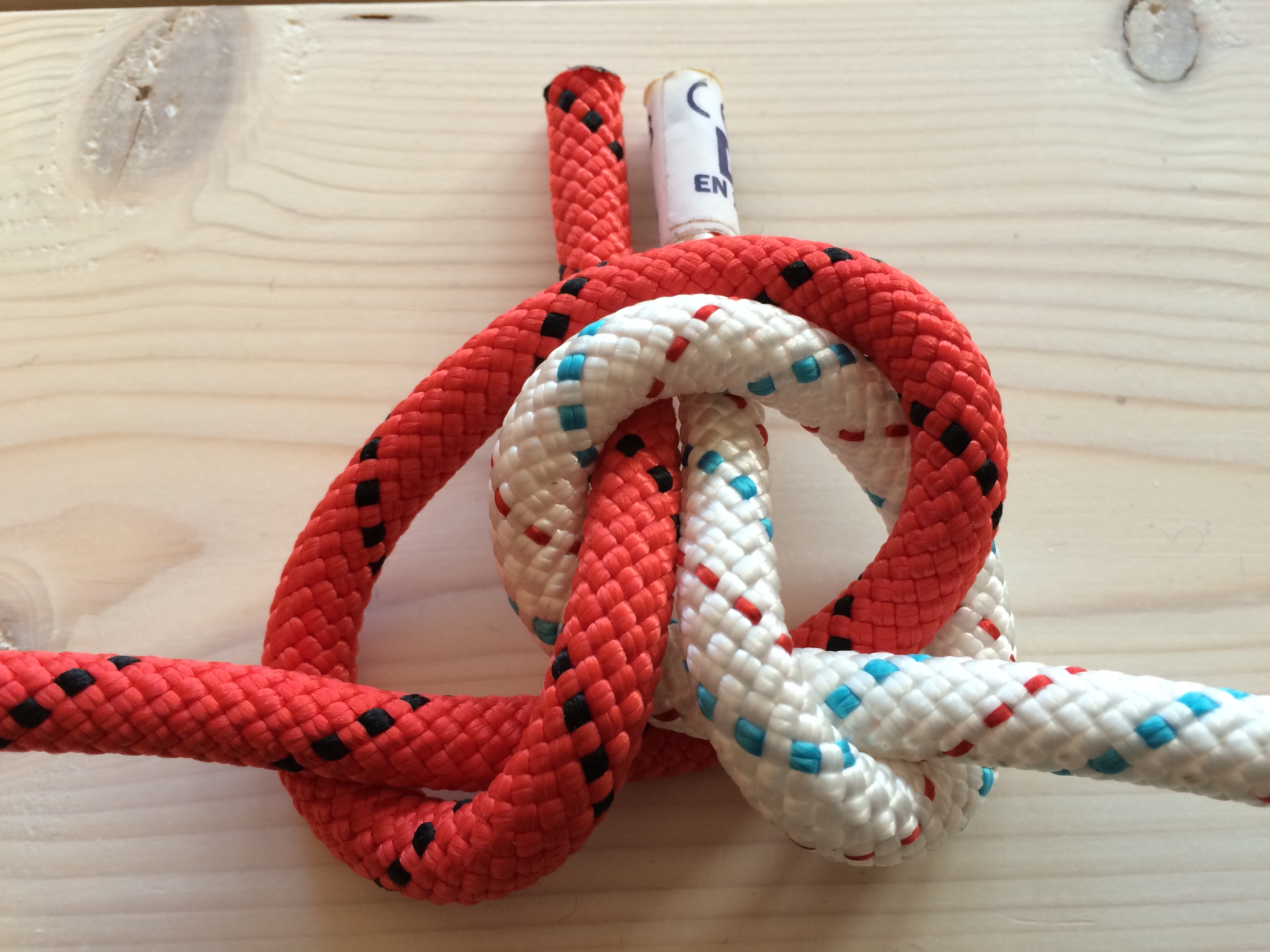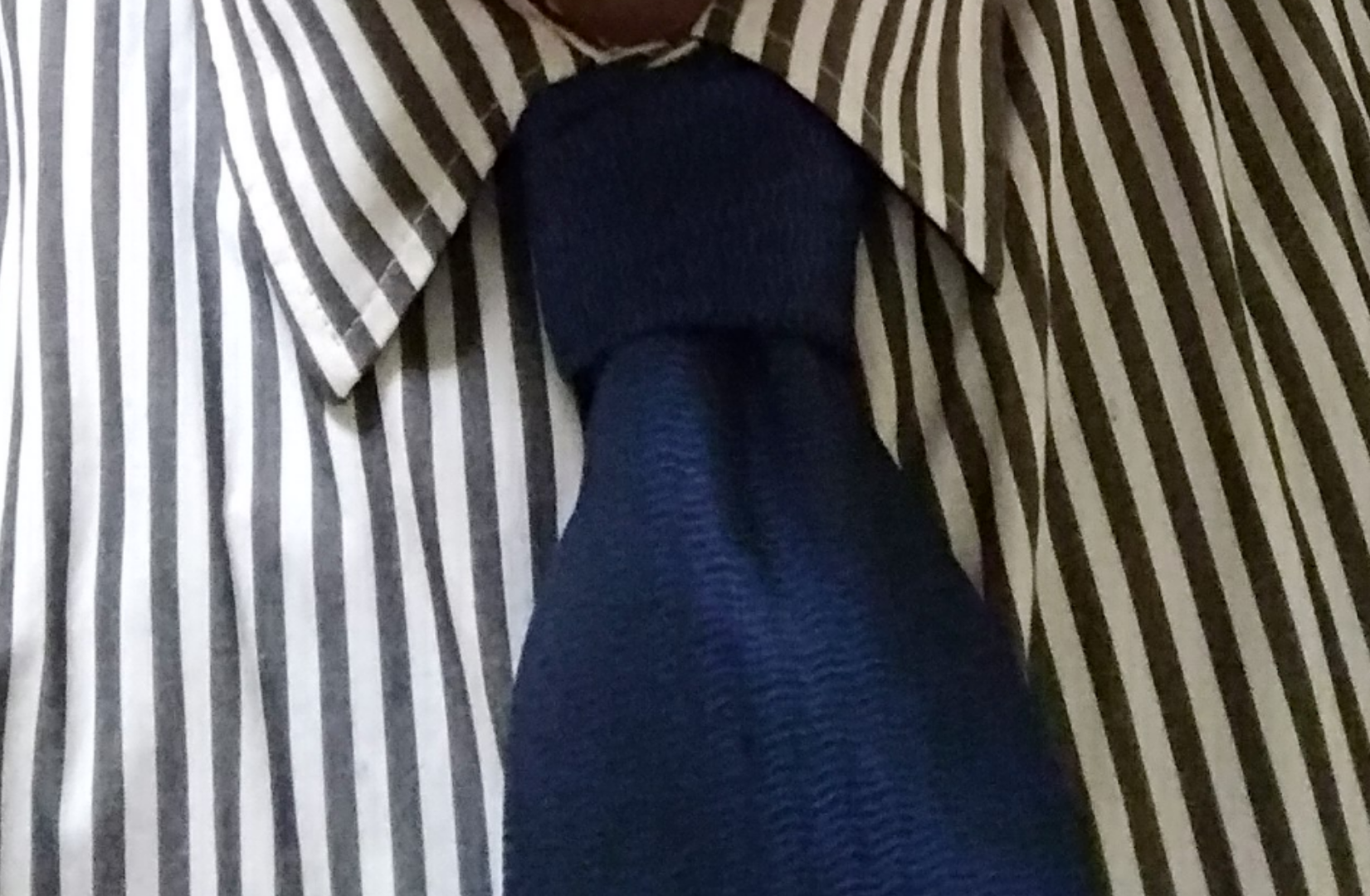Knots
Alexander A. Alemi.
Years ago I decided that I didn't know how to tie any knots and needed to remedy the situation. Unfortunately, if you start to look into knots you discover there is a whole slew of them. It's easy to dive deep and try out dozens of different knots and then be left not remembering how to tie any of them. So, I decided I was going to try to pick the best knot for each of a few different scenarios and then focus on learning and retaining those knots well.
I can say that having done this nearly a decade ago, it's paid off. It's not the kind of thing that comes up very often, but when it does, knowing what to do with a rope has proven a very useful skill. So, which knots do I recommend?
Most sources of this type tend to focus on specific jobs or activities, the best boating knots, scouting knots, climbing knots, etc. I don't do any of those things. Instead, I want to know how to not embarrass myself if I find myself needing to accomplish some kind of task with a rope. So, for each of the common use cases for a rope, I've tried to identify the "best" knot to use. Best, in this case, means some combination of ease of tying, ease of remembering, and strength and ability of the knot. A lot of knots will have "false friends" of a sort, very closely related knots that are often much worse in their characteristics. I tried to pay special attention here, as I don't very often use knots so I need to ensure the ones I focus on learning are robust in the sense that even if I haven't tied it for a few years I'm unlikely to make a grave mistake.
Tying off
If I'm being honest, the most common knot I tie, nearly every day is the Square knot, also known as the reef knot. This is because its the knot I use to tie my shoes, or tie off garbage bags, that sort of thing.

The knot is very common and nearly everyone knows it, but one thing I've discovered is that a good fraction of people tie the knot incorrectly! By far, the most useful thing I learned all those years ago when I decided to dive into knots was that I had been tying my shoes wrong my entire life.
To tie a proper reef knot, you have to alternate which rope goes on top. The mnemonic is right over left, then left over right, if you instead do right over right then right over right as I did most of my life, you end up with the far worse knot, the Granny Knot, instead.
Throughout my childhood and young adult life, it always seemed as though my shoelaces would come untied, I often had to revert to double knotting them to try to get them to last the whole day. The problem the entire time was that I was tying the wrong knot. I've since caught many of my friends and family having the exact same problem. If you spend a few minutes tying both a proper square knot and a granny knot you can immediately learn to tell the difference. The telltale sign when looking at someone's shoes is to check to see if the loops are crooked. Proper shoelace loops should lie down the sides of the shoe. If a granny knot is tied, they tend to rotate and lie parallel to the shoe but perpendicular to the laces. For more info, see Ian Fieggen's site.
Now, as I said, the square knot is by far the most common knot I tie, which is a bit unfortunate because the knot itself is pretty poor. It should not be used in any sort of critical situation. Aside from tying off garbage bags and shoelaces, it shouldn't be used at all. It should never be used to join two ropes. Ashley1 claimed that reef knots have caused more deaths than all other knots combined. Given their familiarity, I imagine many people use them to join ropes not realizing their tendency to slip until it's too late. Learn how to tie a square knot properly but also learn alternatives to use for basically all use cases.
Shoelaces
Speaking of Ian Fieggen, I actually use his quick method to try my shoes these days. It only takes a few minutes to learn and then you can use it for the rest of your life, I recommend checking it out.
Loop at end of the rope
The next most common use case I find myself in is wanting to tie a loop at the end of a rope. For this I think the Bowline is the goto answer.

The Bowline is often described as the "king of knots". It's a nice knot to know. The loop formed doesn't collapse, so can be used to make a handle, to tie a rope around a hole, pole, or other objects. If you make a Bowline in the end and then pass the rest of the rope through you can make a type of lasso or slipknot. Even after being used the knot is usually easy to untie.
Tying the knot is simple and easy to remember, especially with the common mnemonic: "The rabbit comes up the hole, runs around the tree then back down the hole." One thing to pay special attention to is to ensure that the free end of the rope is left on the inside of the loop.
Loop in the middle of the rope
Next, if you need a loop in a the middle of a rope and don't have access to the ends, use the Alpine Butterfly. This is a great midline loop knot, it doesn't collapse, can be loaded from any direction or the loop itself. It is easy to untie after being loaded.

It's also very easy to tie if you know the hand wrap method on Grog's site.
Using this method, its very difficult to mess up the knot.
Bend, joining two ropes
To bend or join two ropes together, we don't actually need a new knot, we can reuse the Alpine Butterfly.

To tie this, use the same hand wrapping method but start with the first rope which you take up to the top of your hand and pinch between your middle fingers, then add the second rope to the same spot and continue the wrap. Pull both ends down and under the two wraps and you've got an alpine butterfly but with the two ends of the ropes playing the role of the loop.
We get another use case without having to remember a new knot.
Hitch, attaching a rope to an object
I have to admit, while last time I looked into knots I managed to learn all the
rest of the knots you see listed here, but I didn't manage to remember the hitch I
had picked.
This is unfortunate because I've found myself needing to tie a rope to a pole
or tree at times. One option is to simply tie a Bowline loop around the object
in question, which I've used in the past, but I've felt bad for not having a proper hitch in my
arsenal.
Since I forgot the hitch I picked last time around, I clearly made a poor choice,
so when preparing this blog post, I started over.
After looking around again, I've decided that going forward, my chosen hitch will be the Backhand Hitch.
The backhand hitch is a Munter hitch with Two Half Hitches to finish it off. It appears to be gaining in popularity, with many extolling its benefits. It's a secure knot that is not only easy to untie but can hold a load while being untied due to the Munter hitch at the base.
As I said I don't have a whole lot of personal experience with this knot, but I'll try to retain it going forward.
Trucker's Hitch
Another reason I like the Backhand hitch is that it sets us up well to make use of another kind of popular hitch, the Trucker's Hitch2. I think of the Trucker's hitch less as a particular knot as more as a sort of principle for how to tie down loads. A trucker's hitch involves tying a mid-line loop in a rope which you then use a pulley to get three-to-one leverage as you try to pull the line tight. After that, you simply tie it off when it's appropriately tight. The three-to-one leverage you get really helps tighten the rope.
For our midline loop, we can use the Alpine butterfly from above. After pulling tight, we need to secure the rope, and for that, we can finish the Trucker's hitch with the same Two Half Hitch structure we use to finish the Munter Hitch in the Backhand Hitch, here around both of the ropes at the same time.
Even though it's composed of the other pieces we've discussed so far, it's worth practicing the Trucker's hitch altogether, and with some regularity. It's the kind of thing that if you can recall immediately can be a big help, but if you have to look it up, it's not really worth it.
Necktie
I don't often wear a tie, but when I do I use the Pratt knot. A modern, relatively slim, nicely symmetrical tie knot. It has served me well, and I like that it starts with the tie reversed.

Binding
If you want to very securely close off a bag or sack, so well that you'll have to cut the rope to get it open again, look no further than the Constrictor Knot. It can also be tied in the end of a rope.
Stopper Knot
Finally, though I don't think it's the most important use case, a surprisingly common one is needing to put a stopper knot in a rope, just something to keep the rope from slipping through a hole. Nearly everyone knows the [Overhand knot, however, I think fewer people know that there are superior alternatives. The overhand knot tends to bind, being difficult to untie if pulled taught, and isn't particularly big a stopping knot, to begin with.
If the desire is to have a large stopper knot, the Double overhand is much better than the ordinary overhand knot and very easy to tie, simply add an additional turn while tying the overhand knot. When pulled tight it forms a neatly symmetrical stopper, but tends to bind tight, perhaps tighter than the overhand knot.
If you want a stopper knot that can be untied, the Figure 8 knot works well, and could also be described as adding an additional to the overhand knot, but this time on the outside of the knot.
Try them out
Get yourself a piece of rope, and a free half-hour or so, and try out some of these knots. If you focus on a short list of a handful of knots, one for each situation you might need to use a rope for, I think you'll find it time well spent.